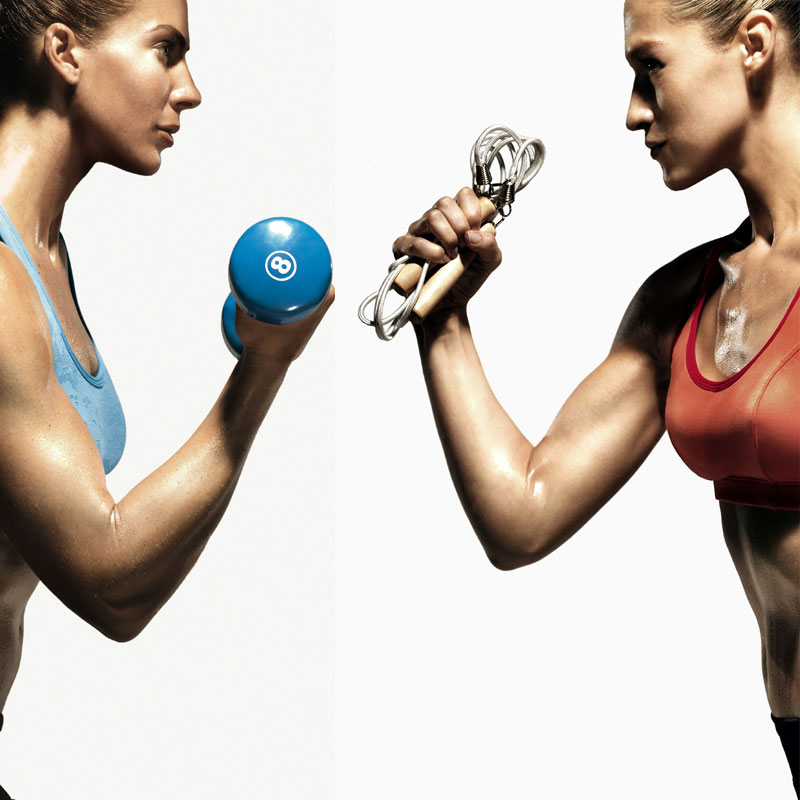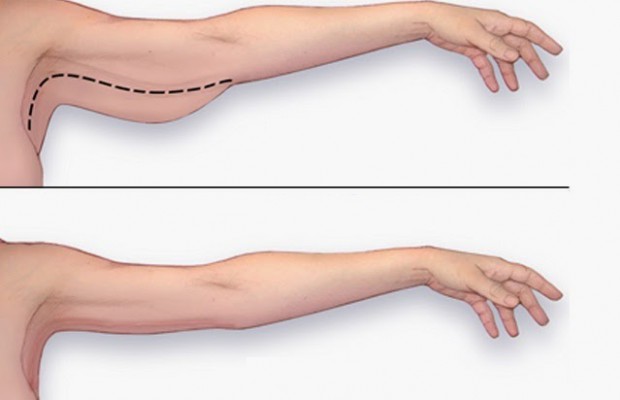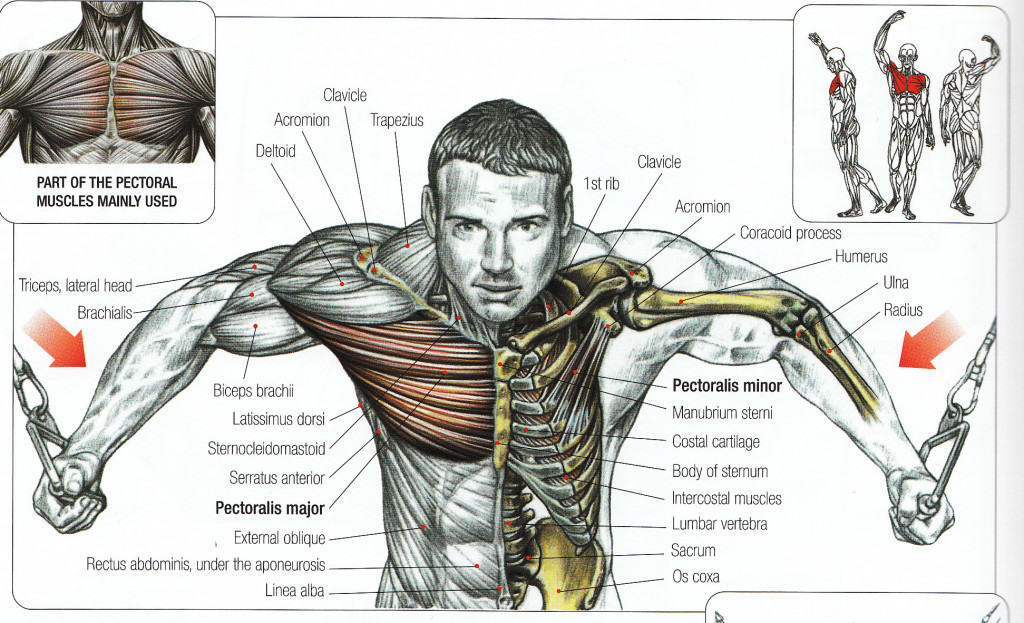Every day, thousands and thousands of people throughout the world ask all sorts of fitness related questions, mainly about losing weight, but a good majority of them are about muscle building and injury rehab as well.
It has been our experience that the questions above tend to be the most popular ones posed by fitness enthusiasts, and even people already on their journey through fitness.
It’s not hard to figure out why people want answers to these questions, and why people want to work out in general. Take a look at the statistics below and use them as a motivator to start or keep working out and asking gym questions at the gym and outside it.
Related: 9 Best Ways to Spice Up Your Boring Fitness Routine
Most Frequently Asked Gym Questions
So, we though it was only right to place these health and fitness FAQs here as a reference for any and all who seek a quick answer to the most common gym questions when embarking on a journey through fitness.
What Is the Best Way to Lose Fat?
Honestly, there is no “best” way to lose fat, but doing things that stimulate many of your body’s muscles groups and include weights will shred more calories per minute than doing activities with no weight-bearing.
It’s important to note that things like strength training and endurance exercises have both been proven to decrease percentage of body fat; but aerobic exercises, as it turns out, has a greater effect on fat loss than strength straining.
The takeaway being that, doing both types of exercises is bound to result in more fat loss than either exercise alone. So if you’re looking to lose fat, compose a regiment of both endurance and strength exercises, do it consistently, and you should start seeing results soon enough.
If I Lift Weights, Will I Get Bigger Muscles?
The three things that matter most in attaining hypertrophy, meaning your muscles getting bigger, are: genetics, training intensity, and your gender.
Genetics comes into play because of the different types of muscle fibers. People who have fast-twitch fiber acquire muscles with more ease than people with predominantly slow-twitch muscle fibers.
As far as gender goes, males tend to acquire more muscles than female counterparts, mainly due to the testosterone and other sex hormones that come into play with influencing protein metabolism.
Now that we got the two static factors out of the way, it leaves us with the only dynamic, controllable, factor: training intensity. If you want to get bigger muscles, keep the load you are lifting at least 80% of your 1-rep maximum.
If you haven’t worked out in a while or you are one of those people with fast-twitch fibers, the percentage tends to be less.
How Do I Get a Flat Stomach?
Perhaps THE most common of the gym questions. Once again, genetics come into play in determining whether or not you can achieve a “six-pack.” Given that fact, two exercise types definitely help in getting that flatness. The two types are, strength training and cardiovascular exercising.
What we see as a six pack is really the abdominal muscle group growing through the fat and making it self visible, as with any other muscle, it can go through hypertrophy.
The reason it’s so hard to attain a six-pack abdominal aesthetic is because the abdominal muscles are located in an area of the body that contains the most fat.
So that is why, in order for our abdominal muscles to cut through the fat and gain definition, we must incorporate cardiovascular exercises with strength training and decrease the body fat altogether.
Should I Do Cardio First or Weight Training First?

This depends on what your goals are. If your goal is increase endurance or simply to lose weight/fat, then performing cardio first and then strength training is the way to go.
If getting bigger, attaining more muscle, is your goal, then you are better off performing the strength training first. If you’re looking to do both, alternating the type of workout you do first will help you get better results.
Ultimately, the important thing to note is that as of right now, there is no research that supports the notion that doing cardio right before strength training will increase the amount of fat used and therefore burned during the strength training workout, and also vice versa.
So focus on your goals, and do the most important type of workout first that complements your ultimate fitness goal.
Related: Cardio Before or After Weights - Does It Really Matter?
Do I Need to Take Dietary Supplements?
The million dollar gym question. Truthfully, as humans, ideally we should not need to take dietary supplement unless we have vitamin deficiency and/or do not eat a balanced diet filled with the nutrients we need on a daily basis.
So, yes and no is the answer. If you have a sound diet and you take in all the nutrients necessary on a daily basis, which very few people actually do, then you will be fine.
But supplements can and do help fill that nutrient void that most of us have on a daily basis. It is not recommended to rely solely on supplements for your daily nutrition intake, but rather they should be used exactly as their name suggests, as a supplementation to our diets.
In addition to this, the supplement industry as a whole has so many products and marketing schemes that it can be over bearing for one person to tackle on their own.
What Is My Target Heart Rate?

If your goal is to increase aerobic endurance, then you’re looking at a target heart rate of 65 to 80% of your HRmax. During interval training, however, which is primarily focusing on bettering cardio performance, you’re looking at a target heart rate of 80% or HRmax or greater.
A good way of predicting the HRmax is by measuring your heart rate while maxing out during an exercise, or by subtracting your age from 220. How you feel during HRmax is also important, because not everyone’s body responds the same to maximum exercise tests.
Calculate your target heart rate with The Target Heart Rate Calculator from Cancer.org.
What Is the Difference Between Weight Machines and Free Weights?
Long story short, weight machine use a thing called variable resistance, while free weights keep the resistance on your muscles all the way throughout the range of motion; excluding the resistance caused by gravity from the equation.
The big difference between the two is that when you’re exercising using free weights you are exercising in a three-dimensional world, but when you are using the machines it is one dimensional because your actions are guided by the machine; you only use muscles that the machine is designed to train.
Meaning, with free weights you are using many more muscles to maintain and sustain balance throughout the exercise. If you are new to weight lifting, use the machines first and then progress into free weights to level up.
Related: Free Weights vs. Machines - The Ultimate Guide
Why Are My Muscles Sore After a Workout?
Soreness timeline: intense during the first 24 hours after exercising, peaks throughout the next 48 hours post-exercise, and goes away within five-to-seven days after the workout. As you adapt to your training load, you will be less sore going forward.
Muscle soreness is a result of high force production. Typically this happens when an exercise is new, meaning you have been lazy and did not work out in a long time, have not trained this particular muscle group, or simply because you are using more weight than you usually do.
Furthermore, there is a thing called delayed onset muscle soreness, and it is cause mainly when you are lowering a weight, and thereby performing eccentric muscle contractions, or lengthening of your muscle.
Medical terminology aside, lowering weights and lengthening your muscles in that way result in more soreness than holding weights steady and/or lifting them up.
Related: 10 Best Rollers for Muscle & Back Exercises
What Can I do to Ease the Muscle Soreness Pain?
There are some things you can do to help relieve muscle soreness. Remedies can include:
- Stretching, but gently
- Massaging your muscles
- Reduce inflammation by icing your muscles
- Stimulate blood flow to the muscles by applying heat on them
- Give your muscles proper rest
- OTC pain medicine, such as a non-steroidal anti-inflammatory drug (NSAID)
Related: How to Use a Foam Roller
How Do I Get Rid of These Flabby Arms?

Answering this question requires debunking a myth which states that one can turn fat into muscle, false! Losing fat and building muscle does not work in this way, this way of thinking results in such things as “spot reducing” and “spot toning.”
The notion that we can pinpoint which part of our bodies we want to strength train and exercise the fat out of by only doing that specific body part. We do not dictate exactly from where our bodies will choose to oxidize fat.
So, doing triceps press-downs does not mean that you will lose the flabbiness. Just like doing crunches does not mean you will lose the fat in your abdominal area. Secondly, flabby arms tend to be a product of age, due to the skin becoming less elastic.
Moral of the story is, any exercise that burns fat will help you reduce the flabby arms, as it will also help you lose fat from other areas as well.
How Often Should I Work Out/Lift Weights?
Depends on who you ask, truthfully. The experts over at the American College of Sports Medicine say that 20 to 60 minutes, three to five days a week will do it. As with a few other questions, this is dependent upon your fitness goals and the ultimate desired outcome of your fitness journey.
The more often you exercise the healthier you will be, you should see improvements in your cholesterol levels, aerobic power, cardio health, and overall composition of your body.
But it is as equally important to pace yourself and not exercise excessively too soon; as these behaviors will can and do lead to overuse injury.
Additionally, there is nothing wrong with lifting weights on a daily basis, just like there is nothing wrong with doing cardio every day.
Muscles can’t tell the difference between what you are doing, all they understand is that they are being stimulated, whether it be by running or lifting weights. The only thing muscles know how to do, is to contract when overcoming resistance.
But it is recommended to not work the same muscle groups in consecutive days, as it is important to let that muscle group rest and adapt.
Related: How to Get a Wider Chest - Basic Tips You Need to Know
Eye-Opening Statistics Worth Mentioning
If you've been in need of some motivation, take a look at the following sobering statistics.
- Roughly over 78 million USA adults and about 12.5 million American children are obese (2009-2010 data)
- Projections show that by 2030, about 115 million or HALF of adults in the USA will be obese
- Overweight kids have a 70% chance of becoming overweight or obese adults.
- Almost 45% of kids living in poverty are overweight or obese
- About 22% of kids living in households with income 4x the poverty level are obese or overweight
- Obesity-related conditions include:
- heart disease
- stroke
- type 2 diabetes
- risk factor for certain types of cancer
- The estimated annual medical cost of obesity in the U.S. was $147 billion in 2008 U.S. dollars
Sad Facts About Physical Activity
- Only 1 in 3 children are physically active every day
- Only 1 in 3 adults do the recommended amount of exercise per week
- Children spend now more than 7 1/2 hours in front of a screen daily
- 80.2 million Americans, aged six and older are physically inactive
- Nearly 1/3 of high school kids play video/computer games for 3+ hours on school days
- American diets exceed the recommended intake levels or limits in solid fats, sugars, refined grains, saturated fats, and sodium
- Americans don’t eat enough veggies, fruits, dairy, oils, and whole-grains
- Almost 9 out of 10 American eat more sodium than recommended for good health
- USA could save up to $20 billion a year in medical costs if sodium consumed is reduced by 1,200 mg per day
- The number of fast food places has more than doubled since the 1970’s
- Food deserts – means an area that is more than one mile away from the nearest supermarket
- More than 23 Americans live in food deserts, 6.5 million are children
- Current federal guideline for sodium consumption is 2,300 mg per day
- US adults consume on average about 3,400 mg per day!
- US per capita intake of total fat increased from about 57 lbs in 1980 to about 78 lbs in 2009
The Takeaway
As you can see, when it comes to answering health and fitness questions, a yes or no answer is not common. That’s because many factors come into play when lifting weights or exercising to obtain optimum health.

The good thing is that there is an abundance of information available for all of your fitness questions and concerns. Keep checking back as we will be posting frequent updates to these questions and publishing other similar valuable information.
Keep reading: Learn about the machines in your gym by viewing this Gym Equipment Names and Pictures Guide.


